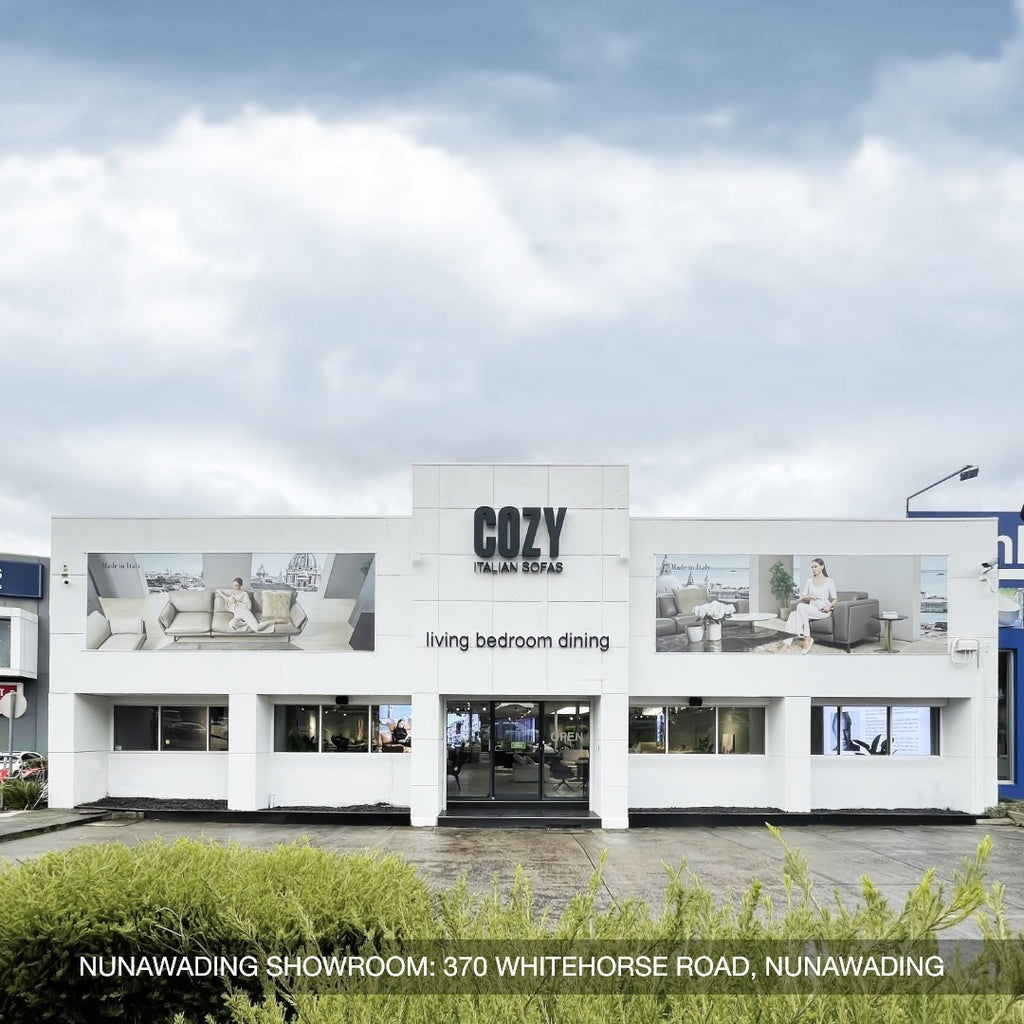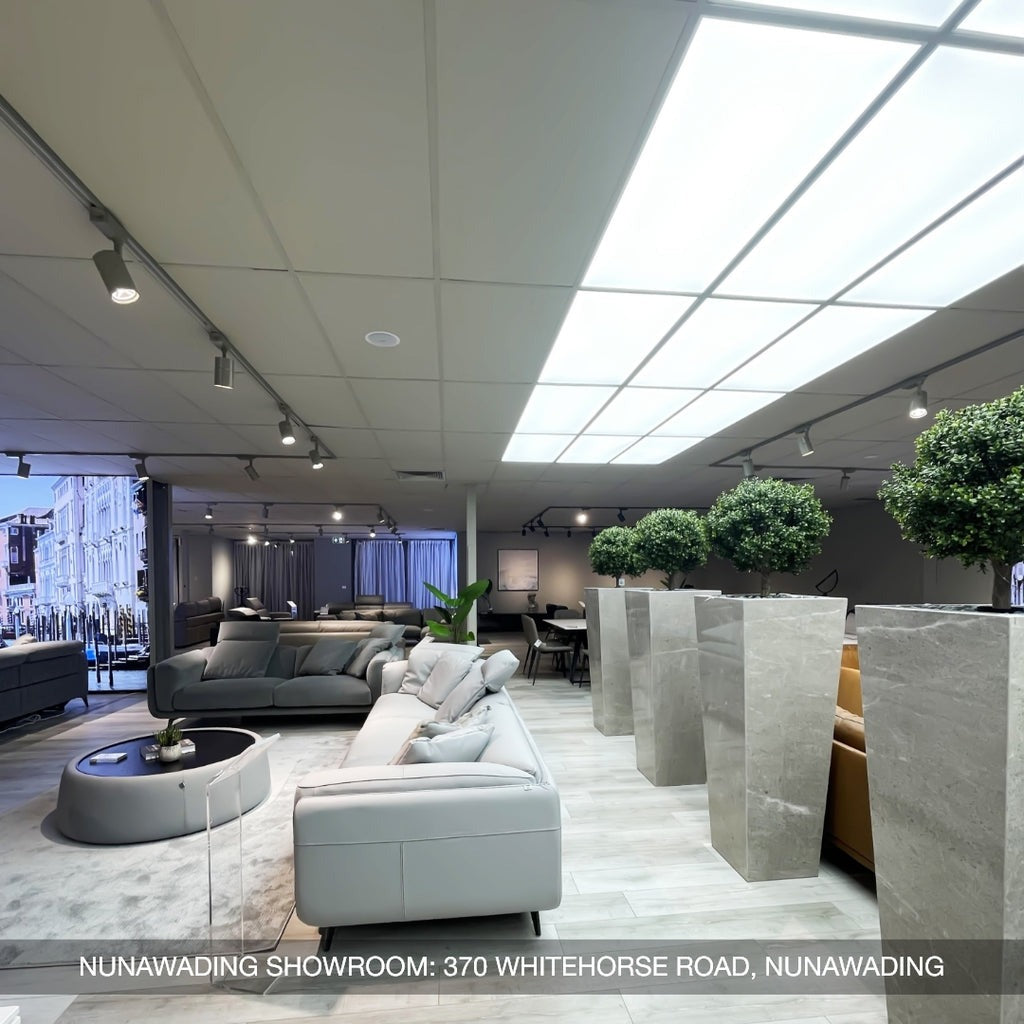Creating a bright and inviting natural light living room starts with thoughtful arrangement. A well-lit living room not only feels more open and welcoming but also promotes a sense of calm and relaxation. This guide will explore how to maximize natural light in a room, offering practical tips to transform your space into a cozy natural living room.
Your Home's Orientation and Architecture
The orientation of your home impacts the amount of sunlight your living room receives. Ideally, the living room should face north in the Southern Hemisphere (e.g., Australia) or south in the Northern Hemisphere for consistent, balanced light throughout the day. This orientation is particularly beneficial during cooler months when maximum sunlight is desired for warmth and brightness.
Well-planned architectural features can significantly increase natural light in room settings:
- Large windows and doors: Opt for expansive glass elements, such as sliding doors, to seamlessly connect indoor and outdoor spaces while allowing sunlight to flood the room.
- Skylights and sky tubes: These are effective in illuminating darker areas where traditional windows are less effective.
- Glass roofs and decorative panels: These not only enhance light distribution but also add architectural interest to zen living rooms.
- Bow or bay windows: These designs capture light from multiple angles, offering a panoramic effect and improving overall brightness.
Analyzing the sun’s path throughout the year helps optimize window placement. Use tools like sun charts or apps to determine the best locations for natural light entry.

Incorporating expansive glass elements, seamlessly connects indoor and outdoor areas while allowing sunlight to fill the room.
Smart Window Treatments
Once you understand how sunlight interacts with your windows, you can select coverings that manage light effectively. The right window treatments can enhance privacy without sacrificing brightness.
- Clean windows can increase light penetration. Dirt and grime accumulate over time, reducing the clarity of glass and hindering light flow. Regular cleaning, using streak-free glass solutions, ensures unobstructed light entry and amplifies the brightness of your living space.
- Sheer curtains or blinds made from lightweight fabrics like voile or muslin help diffuse sunlight effectively. They create a soft glow while maintaining privacy, which is ideal for creating bright spaces with neutral colors. Combining sheer treatments with reflective decor, such as mirrors or metallic accents, enhances light distribution across the room.
- Adjustable window coverings like Venetian blinds or plantation shutters offer precise light control throughout the day. Sheer roller blinds are another excellent option, blending functionality with modern aesthetics to complement open-concept layout strategies.
- Motorized blinds represent contemporary brightness solutions by allowing homeowners to control light levels remotely. These smart solutions are perfect for high windows or multi-functional spaces, combining convenience with the ability to optimize brightness seamlessly.
- While natural light is central to a well-lit room, a layered lighting strategy enhances its impact. Combining table lamps, floor lamps, and overhead lighting provides a balanced, warm atmosphere, especially at night. For maximum synergy, select bulbs with a color temperature of 2700K to 3000K to mimic daylight tones.
Furniture Arrangement for Optimal Light Flow
Poorly arranged furniture can block light pathways and diminish the room’s brightness.
- Placing bulky furniture like bookshelves or sofas directly in front of windows significantly reduces light entry. Opt for alternative arrangements that keep the window area open.
- Low-profile furniture pieces such as coffee tables, benches, and modular sofas support open-concept layout strategies, preventing visual clutter while maximizing light distribution. This arrangement helps maintain an unimpeded light flow, creating a sense of spaciousness.
- Positioning seating to face windows allows occupants to enjoy both the view and the benefits of natural light. This approach also aligns with space division techniques, as it visually anchors the seating area while leaving pathways unobstructed. For example, arranging armchairs near bay windows not only enhances the aesthetic but also optimizes light access in the seating zone.

Improper furniture placement can obstruct light pathways and reduce a room’s overall brightness.
Color Palette: Brighten and Enlarge
Opt for light-reflective colors like white, pastels, and neutral shades for walls and furniture. Research shows that white walls can reflect up to 80% of available light, compared to just 35% for darker colors. These tones enhance the diffusion of sunlight, making small or dim spaces feel open and inviting.
Using glossy or semi-gloss finishes on walls and furniture can amplify the reflective effect. For example, a glossy white sideboard not only enhances brightness but also integrates seamlessly into a natural light living room aesthetic.
Flooring materials such as light wood, neutral-colored tiles, or cream-toned rugs contribute to a brighter ambiance. According to interior design studies, lighter flooring can make a space feel 15% larger and significantly enhance natural light flow.
Ceilings painted in white or off-white maximize upward light reflection, creating an airy, open atmosphere. This technique is particularly effective in rooms with low ceilings, where a lighter color palette can visually expand the height.
Mirrors: Amplify Light
Mirrors are powerful tools for redistributing light and adding depth to a natural light living room. When strategically placed, they create a sense of openness while improving brightness levels.
Placing a large mirror directly opposite a window doubles the perceived light, as the reflection bounces natural sunlight throughout the space. For example, a mirror positioned behind a sofa not only enhances light but also complements furniture placement principles by creating a balanced focal point.
Mirrors with decorative frames add visual interest while maintaining functionality. Additionally, mirrored furniture, such as coffee tables or console tables, enhances light reflection subtly and elegantly.

Mirrors are highly effective for amplifying natural light and creating a sense of depth in living spaces.
Bringing the Outdoors In with Plants
Adding greenery not only enriches the aesthetic appeal of a natural light living room but also promotes a connection with nature, improves mood and indoor air quality.
- Plants act as visual bridges to the outdoor environment, softening the transition between interior and exterior spaces. They contribute to an organic, inviting atmosphere that complements natural light.
- Plants with light or variegated foliage, such as peace lilies or golden pothos, brighten dim corners by adding subtle light tones.
- Combining plants of varying heights and textures like tall fiddle-leaf figs paired with smaller succulents, creates depth and visual harmony in the room.
- For an Australian natural light living room, consider fiddle-leaf figs, rubber plants, ferns, Flamingo Flowers (Anthurium andraeanum), or Tropical Hibiscus. These species thrive in indirect light and add vibrant greenery without overshadowing the brightness of the space.
A natural light living room not only enhances your home’s aesthetic but also creates a warm, inviting atmosphere perfect for relaxation and connection. At COZY, you’ll find high-quality furniture designed with furniture placement principles that prioritize light flow and functionality. From sleek modular sofas to reflective surfaces, COZY offers everything you need to transform your living space. Visit COZY today and explore how our expertly crafted furniture can help you create a beautifully bright and harmonious living room.





